The Six on Saturday gardeners were so welcoming of my first post last week, I decided to go again. Besides, I have a few favorite things, and one surprising one, to pass along. Before starting, though, I want to remind my After Eden followers that they, too, can join in by following the directions posted here: (https://thepropagatorblog.wordpress.com/2017/09/18/six-on-saturday-a-participant-guide/ )
1. Red Buckeye, (Aesculus pavia) is my first today because it was one of my first successes during my Master Gardener certification. This shrub came from a buckeye I planted in late 2004. It has come into its own in recent years, even producing several fruits last year. The bloom is just beginning to develop, but it is already clear why it is sometimes called the firecracker plant.

2. Variegated Solomon Seal (Polygonatum odoratum ‘Variegatum’) is a repeat from last week, but now the blooms are developing, so I believed it deserved an update.

3. Bellwort or Merry Bells, (Uvularia), is a native perennial that appears in one little patch in the woodsy part of the garden. Reminiscent of the Solomon seal above with its hanging flowers, it is a very tender and delicate plant.
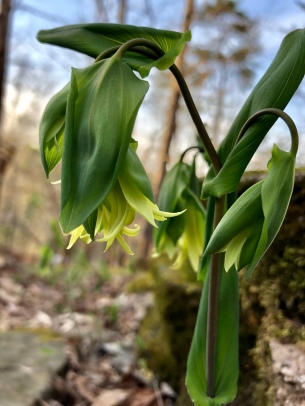
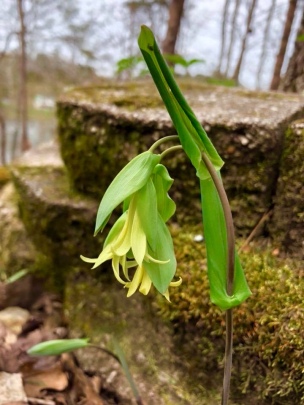
4. Trailing Phlox (Phlox nivalis) is another native wildflower to the Southeastern US. I confess that I never gave it much attention, just showing up in little clumps as it does throughout the wooded area, until I became more interested in native plants. Its leaf structure is different and more purplish than its close look-alike creeping phlox.
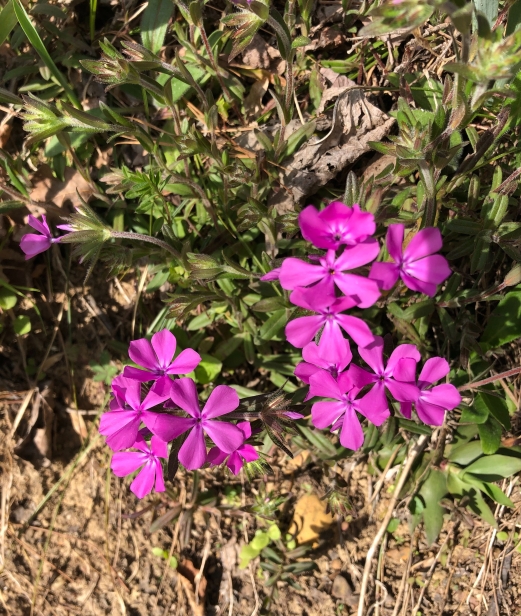
5. Dwarf Iris (Iris verna) is the smallest of the native irises, growing four to six inches tall, but its color can be brilliant. That is one of the reasons I selected it for the feature image for this post. It is typically found in dry pine forests, and I do have several pines in the wooded area of the garden, as evidenced by the pine needles in the photo below. I have tried to transplant these irises to other areas, but have had no success. Unfortunately, the blooms will soon be gone, although the leaves will persist through the spring.

6. Candy Cane Camellia, (Camellia japonica ‘Candy Cane‘) is my final selection for this Saturday. It is just about at the end of its show, but in the last two weeks it did something I have not seen before. It has produced a few solid red blooms and a lovely pinkish-red one. The weather here has been so erratic, that I thought all blooms were frozen dead a few weeks ago. The first photo below is what the flower has always looked like. The other two are photos of what I found this week.
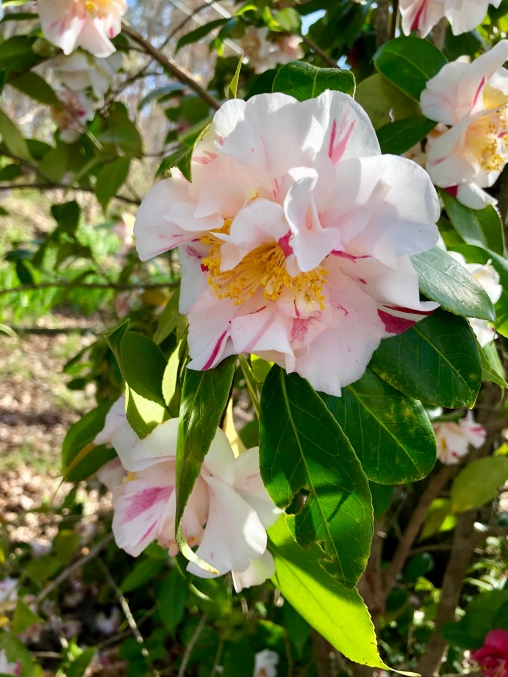

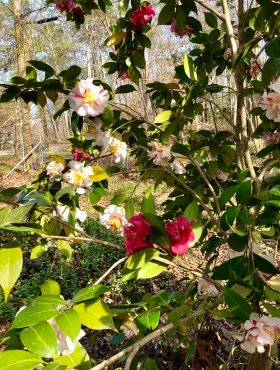
If any readers know what is going on here, I’d really appreciate an explanation in the comments.

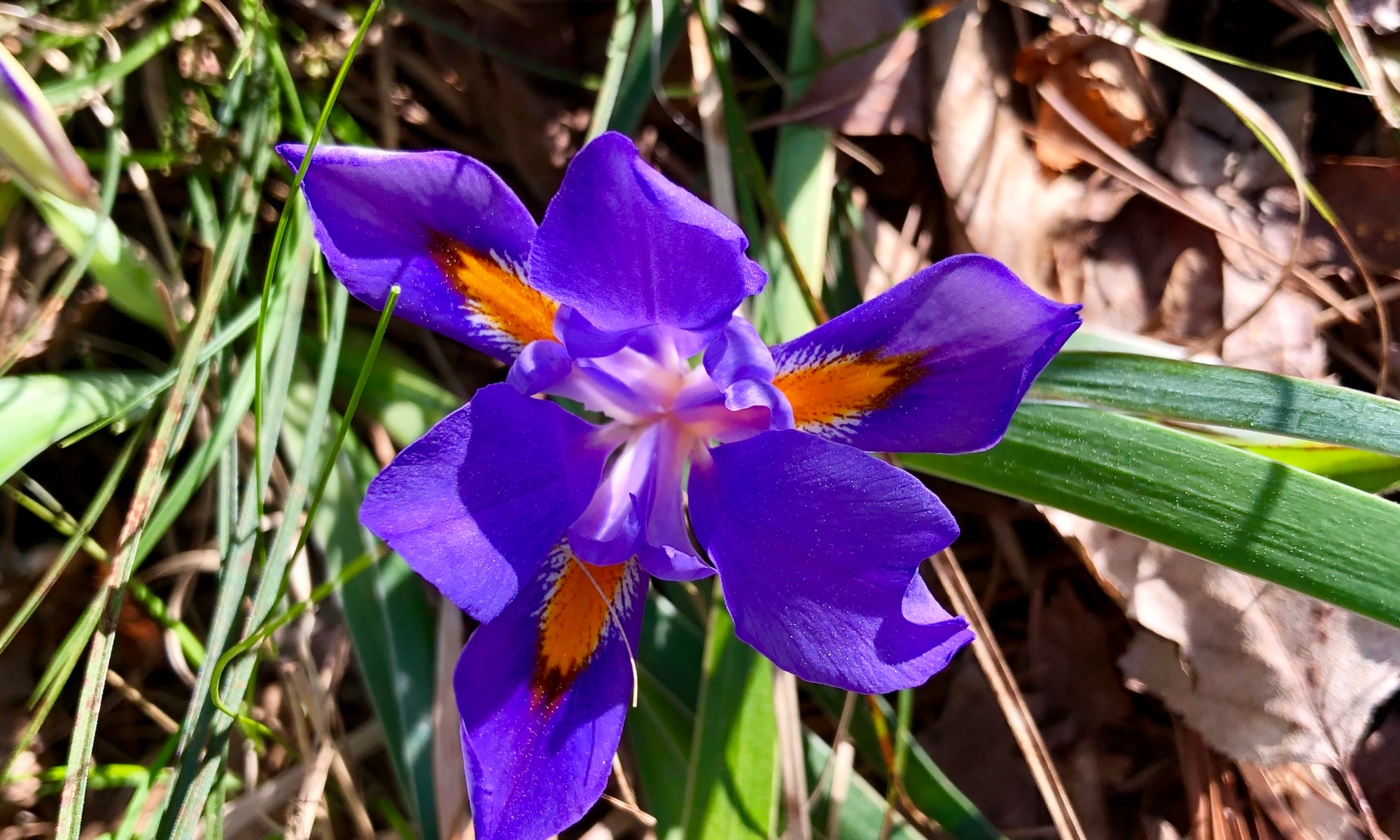
Aren’t these branches reverting back to the red camellia from which this white with a touch of red one was grafted and developed as a hybrid? There are an amazing array of wild plants in your garden!
LikeLike
Something like that must be going on, but I doubt grafting was involved. And, the reds are not appearing along a single branch, but throughout. I am wondering about the part the weather is playing in this. The camellia is at least 15 years old.
LikeLike
Susan, I have the same thing on one of my shrubs but I just assumed the nursery had just planted two varieties in one pot. It’s gorgeous! Love your posts.
LikeLiked by 1 person
There is a Camellia on our street that behaves like this – fabulous! Two plants in one but I have no explanation! 🙂
LikeLiked by 1 person
I very much enjoyed reading about your woodland plants, and then suddenly a strange camellia! I don’t know what’s happening there ( there will surely be a Sixer who does though) but it makes for a very interesting plant.
LikeLiked by 1 person
Beautiful images this week–especially the pink phlox. I know I have asked others before, but does anyone recognize the “pinks” that you might see along the coastline when fling into San Francisco. These present as luscious fields of pink everywhere. Are they also phlox? And if so, do they perhaps grow well in this region of the Southeast (zone 7)? Very curious.
LikeLiked by 1 person
That camellia is gorgeous.
LikeLiked by 1 person
Hello again Susan. Your camellia may just have thrown a sport, not unusual for a flowering shrub. It’s a genetic mutation and if propagated can be the source of new varieties. Are the different colour blooms all on the same stem?
LikeLike
I believe that they are on different stems. Although, the two in second picture above might be off of the same stem.
LikeLike
That Bellwort is charming. I’ve just looked it up and there are many suppliers here in the UK. Why have I overlooked it? Lovely
LikeLiked by 1 person
It really is charming, but devilish as well. It comes up in a narrow path so that I have to jump over it. I want to transplant it, but do not quite have the nerve. Just have to do a little research, I guess. I hope you get it to grow well for you.
LikeLike
Six on Saturday gets some of the most compelling pictures. The various buckeyes are probably common where the pictures of them are taken, but I have never seen any other than our native California buckeye, which is nothing like the others. It is twice deciduous, so defoliates in the warmth of summer. I am not impressed by them, so I can not help but wonder what the others are like.
LikeLike
These are rather uninteresting when the leaves fall, but the new leaves in the spring are attractive, going from a light green with bronze tinge to the richer green—rising up almost as an umbrella opens. When they are in full bloom, they are eye-catching in the understory. I’ll post a photo when the time comes.
LikeLiked by 1 person
That is to be expected. I mean, they can go bare in the winter if they want to. I am more interested in the bloom, and the foliage in the middle of summer, which ours lack. Bare trees in summer look dead.
LikeLike
The explanation for the camellias behaving in that way is hideously complex and involves transposable elements in their DNA. Bits of foreign DNA are jumping into genes that control pigment production and stopping it. The same element can jump back out, allowing pigment production again. There was an article about it in the 1992 Journal of the International Camellia Society by Nancy Van Shaik.
LikeLiked by 1 person
Thank you, Jim. This is helpful. I think it is wildly interesting that the same thing happened to a Candy Cane camellia of a friend in this year.
LikeLike